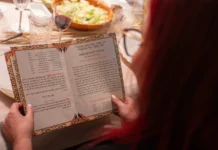Today marks the first day of Sukkot, the weeklong Jewish festival that not only signals the end of the high holidays but holds both historical and seasonal significance, as well.
Rabbi Ari D. Weiss of Cornell Hillel tells Refinery29 that Sukkot is the final harvest festival in the Jewish calendar, with Passoverand Shavuot preceding it. It’s specifically associated with the end of the fruit harvest in Israel, which was historically considered a period of bounty. So, Sukkot was traditionally a chance for Jewish people to pause and celebrate the newfound wealth that comes with the harvest, but with an understanding that wealth can be temporary.
Rabbi Weiss compares the spirit of Sukkot to that of Thanksgiving: “The underlying message is to give thanks, but also to recognize that it’s not all ours. It’s not really our work that creates the wealth — it’s really greater things that do that, whether it’s nature or God.”
It’s from that desire to show gratitude — and to demonstrate the impermanence of wealth — that it’s customary to build a temporary structure known as a sukkah ahead of or during Sukkot. “When we’re the wealthiest, we actually uproot ourselves and go into temporary dwellings for seven days to celebrate,” Rabbi Weiss explains. He adds that a sukkah is also a symbolic nod to the shelters in which the Israelites lived while wandering the desert for 40 years. This moment in Jewish history is a point of focus throughout Sukkot.
In addition to spending time in a sukkah, people will use the week of Sukkot to enjoy fun outings with their families. (“If you go to Great Adventure or a zoo during this time, you’ll see they’re full of Jewish people,” Rabbi Weiss says.) Observant Jews will also attend special synagogue services, which incorporate seasonal imagery. Known as the four species, four types of plants are blessed and used during Sukkot prayers: a citron, a palm leaf, willow branches, and myrtle branches.
Two holidays arrive at the conclusion of Sukkot — Shemini Atzeret and Simchat Torah. Rabbi Weiss says that these are celebrated as one in Israel, but, depending on the denomination of Judaism one follows, they are viewed as separate occasions elsewhere. Where the former marks the official end of the high holidays, the latter is more of an opportunity to celebrate the Torah.
As this festival draws to a close, people return their attention to the year ahead, only now with the reminder that simplicity and gratitude should go hand-in-hand with moments of joy.

























